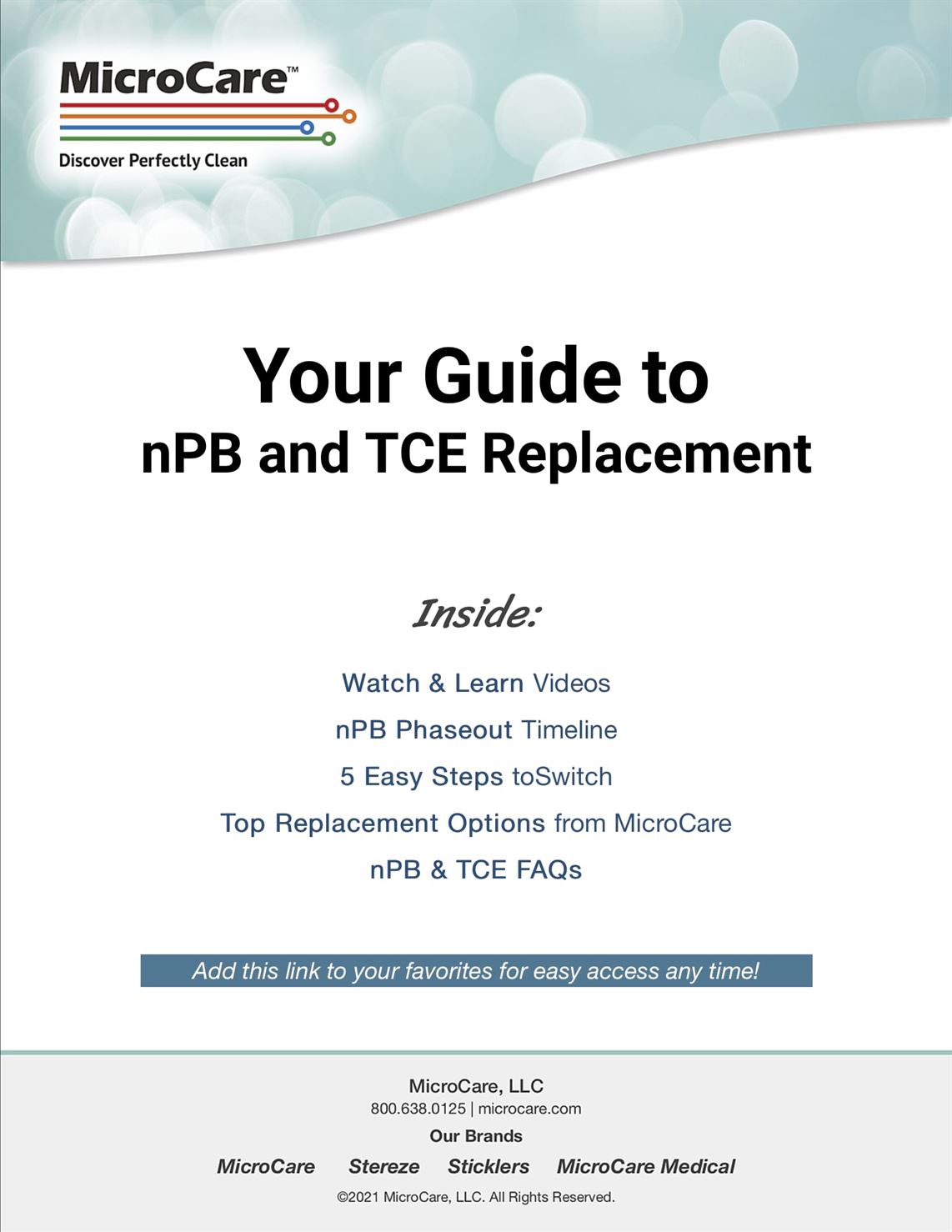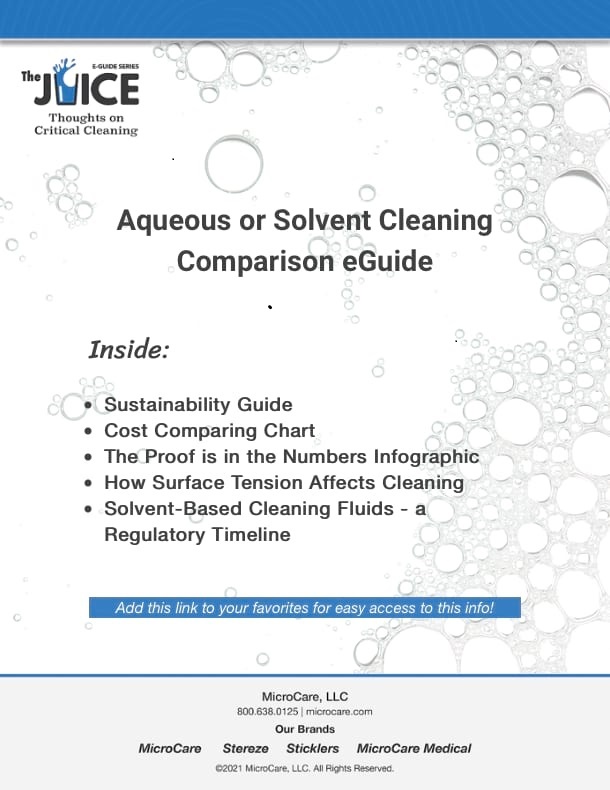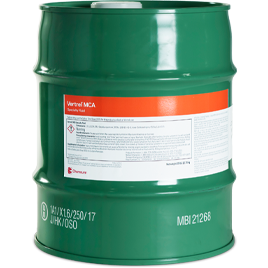Vertrel™ MCA Specialty Fluid
Product Information
Vertrel™ MCA easily removes trapped contaminants on oxygen systems
Applications:
- Optimized for cleaning gaseous (GOX) and liquid oxygen (LOX) systems
- Delivers easy cleaning of complex systems, including tubing, gauges, pumps, filters and valves
- Removes contamination such as fine particulates and trapped oils, greases and waxes without mechanical scrubbing
- Replaces hydrochlorofluorocarbons (HCFCs) in many applications
Features:
- With a low surface tension, low viscocity and high density, it dispcaes soils inside tight, comples spaces
- Compatible with most plastics, elastomers and metals
- Vertrel™ MCA is nonflammable for maximum safety
- Listed by ASTM and CGA (ASTM G93; CGA Directory of Cleaning Agents for Oxygen Service)
- Passes LOX Impact test (NF EN 1997; NHB 8060.1)
- Kb Value: 25
- 806 GWP (Global Warming Potential)
- Not a HAP (Hazardous Air Pollutant)
- REACH, F-Gas and SNAP compliant
Product Details
Product Image |
Part Number | Package | Weight | Size | Technical Data Sheet | Safety Data Sheet |
|---|---|---|---|---|---|---|
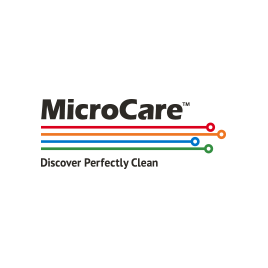
|
MCA16A MCC-MCA16A | Aerosol | 0.45 kg 1 lb. | 473.1 ml 16 oz. | ||

|
MCAGL MCC-MCAGL | Glass (Sample Only) | 1.1 kg 2.5 lbs. | 1 L 1 Quart | ||

|
MCAGG MCC-MCAGG | Glass | 4.5 kg 10 lbs. | 3.9 L 1 Gallon | ||

|
MCAG MCC-MCAG | Metal | 4.5 kg 10 lbs. | 3.9 L 1 Gallon | ||
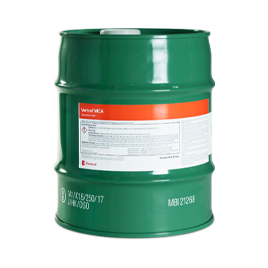
|
MCAP MCC-MCAP | Pail | 22.7 kg 10 lbs. | 19 L 5 Gallons | ||

|
MCAD MCC-MCAD | Drum | 226.8 kg 550 lbs. | 200 L 55 Gallons |
| Part Number | MCC-MCA16A | MCC-MCAGL | MCC-MCAGG | MCC-MCAG | MCC-MCAP | MCC-MCAD |
|---|---|---|---|---|---|---|
| Package | Aerosol | Glass (Sample Only) | Glass | Metal | Pail | Drum |
| Weight | 0.45 kg 1 lb. | 1.1 kg 2.5 lbs. | 4.5 kg 10 lbs. | 4.5 kg 10 lbs. | 22.7 kg 10 lbs. | 226.8 kg 550 lbs. |
| Size | 473.1 ml 16 oz. | 1 L 1 Quart | 3.9 L 1 Gallon | 3.9 L 1 Gallon | 19 L 5 Gallons | 200 L 55 Gallons |
| Technical Data Sheet | ||||||
| Safety Data Sheet |
Scroll
| Appearance | Clear, Color Liquid |
|---|---|
| Odor | Slight |
| PEL (ppm, 8-hr TWA) | 200 |
| Boiling Point | 39°C / 102°F |
| Chemical Family | HFC |
| Evaporation Rate | Fast |
| Cleaning Strength (Kb) | >20 |
| Active Ingredients | HFC and Trans |
| Flashpoint | None |
| Global Warming Rating (100yr) | 806 |
| VOC Organic Content (g/L) | 536 |
| Ozone Impact | Zero |
| Safety Rating | Non-flammable |
| Specific Gravity | 1.41 |
| Surface Tension | 0.0152 |
| Viscosity | 0.49 |
| Vapor Pressure @ 20ºC | 0.610 |
- Are Vapor Degreasing Solvents Flammable?
- What Are the Benefits of Azeotropes for Precision Cleaning?
- What Is a 'Wetting Index' and What Does It Tell Me About a Solvent and Cleaning Results?
- What are good HCFC-225 Replacements?
- What is MIM?
- Why Consider a Vapor Degreaser?
- What Does Vapor Degreaser Hardware Cost?
- How Does Vapor Degreasing Work?
- Why Is Vapor Degreasing Better for Critical Cleaning than Other Technologies?
- What Is AK-225 and Can I Use It for Cleaning?
- How Can Cleaning with Vapor Degreasers Save Electricity?
- Why Do Heavy, Dense Solvents Clean Better than Lighter Fluids?
- How Does the Surface Tension of a Solvent Affect My Cleaning Results?
- What Is a 'Kb Value' and What Does It Mean?
- Are There Any Materials Compatibility Problems with MicroCare Solvents?
- How Can I Monitor My Workers' Exposures to Solvent Fumes?
- What Is the Shelf Life of MicroCare Flux Removers??
- What is the Best nPB Replacement?
- How do smoothing fluids work?
- How Do I Choose a Debinding Fluid for 3D Printed Metal Parts?
- What is Metal Additive Manufacturing?
- How Does the Viscosity of a Solvent Affect My Cleaning Results?
- What's the Best Way to Store and Move Those Heavy Drums of Solvents?
- What Is Viscosity?
- How Does the Boiling Point of a Solvent Affect Cleaning Results?
- Do MicroCare Solvents 'Turn Acidic' Like Old-Style Cleaners?
- Are MicroCare Cleaners SNAP Approved and Accepted?
- What Is the Meaning of a Fluid Toxicity Rating, Like a PEL or TLV?
- What Is the Truth About the Toxicity of nPB?
- Are There Different Solvent Grades of Purity?
- Is a Bi-Solvent Cleaning System a Good Option for Critical Cleaning?
- What's an Azeotrope and Why Should I Care?
- Is Co-Solvent Cleaning in a Vapor Degreaser a Good Option?
- Which Solvent Is Best to Remove Insoluble Particulate?
- Is Personal Protective Equipment Required When Working with Solvents?
- What's the Proper Disposal Process for MicroCare Solvents? Can They Be Recycled?
- How Do I Ship MicroCare Solvents and Keep Freight Costs Low?
- What Are the Benefits of Using a Vapor Degreaser? How Does It Save Me Money?
- Do MicroCare Cleaners Contribute to Global Warming?
- Are MicroCare Critical Cleaning Fluids Ozone-Safe?
- Do MicroCare Vapor Degreaser Cleaners Contain Volatile Organic Compounds (VOCs)?
- Are MicroCare Vapor Degreaser Cleaners F.D.A. Approved?
- Are MicroCare Precision Cleaners Mil-Spec Approved?
- What Is “Critical Cleaning”?
- What Is the Reliable Care Way?
- What Is nPB?
- What Are Halogenated Solvents?
- Can I Use nPB in My Cleaning System?
- Can I Use TCE (Trichloroethylene) In My Vapor Degreaser?
- Can I Use IPA in a Vapor Degreaser or Ultrasonic Cleaner?
- What's the Difference Between an Aqueous Ultrasonic Cleaner and a Vapor Degreaser?
- Will Spec Clean™ Ultrasonic Cleaner Solution Work with Ultrasonics?
- Which Precision Cleaning Fluid Is the Mildest?
- Which Precision Cleaning Fluid Is the Strongest?
- Lab & Analytical Services from MicroCare
- What is an Azeotrope?
- Vapor Degreasing Explained
- Energy Savings in Metal Parts Cleaning
- Environmentally Better Metal Cleaning
- Go Green with Critical Cleaning
- Top 5 Cost Saving Reasons to Switch to a Better Cleaning Fluid
- Top 5 Reasons to Switch to a Safer Solvent
- Coming Clean on Vapor Degreasing: What It Is and How It Works
- How to 'Go Green' with Critical Cleaning
- It's Easy to Cost Justify Vapor Degreasing
- Case Study #12 - Dewaxing MIM (Metal Injection Molded) Parts
- Case Study #14 — Brazed Heat Exchanger Needs Perfect Cleaning
- Case Study #18 — Degreasing Metal Engine Valves
- MicroCare Leads the Way on Safety Regulations and Compliance
- MicroCare Critical Cleaning Experts
- The MicroCare Reliable Care Way
- Acid Testing — an Essential Process With nPB-Based Solvents
- Develop Your Cleaning 'Scorecard' - Criteria in Selecting Cleaning Equipment
- Maximize Profits and Productivity by Avoiding Inflexible Cleaning Processes
- Choosing a Metal Parts Cleaning Method: What You Need to Know
- Building Sustainability into Your Cleaning Process
- Going Green to Clean with Vapor Degreasing
- Vapor Degreasing Infographic
- Cleaning Scorecard Checklist Helps You Determine the Best Cleaning Method
- Rethink Your Cleaning Process: Modern Vapor Degreasing is a Good Option
- Cost-Effective Cleaning with Vapor Degreasing
- Vapor Degreasing: An Economical Choice for Precision Cleaning
- Reduce Energy Costs with Vapor Degreasing
- Aqueous Cleaning Costs Explored; Report Published
- Vapor Degreasing – A Triple Threat to Contaminant
- Vapor Degreasing Fluids Remove Difficult Lead-Free and No-Clean Fluxes from Modern PCBS
- Top Ten Reasons to Switch to a Better Solvent
- Using the Numbers to Determine Worker Safety
- Ultimate Guide to nPB Replacements
- From Harmful Solvents to Modern Sustainable Cleaning Fluids
- How to Choose a Debinding Fluid for 3D Metal Printing
- Finishing Fluids for 3D Printed Parts
- Switching to a New Fluid: How to Measure Debinding Success

